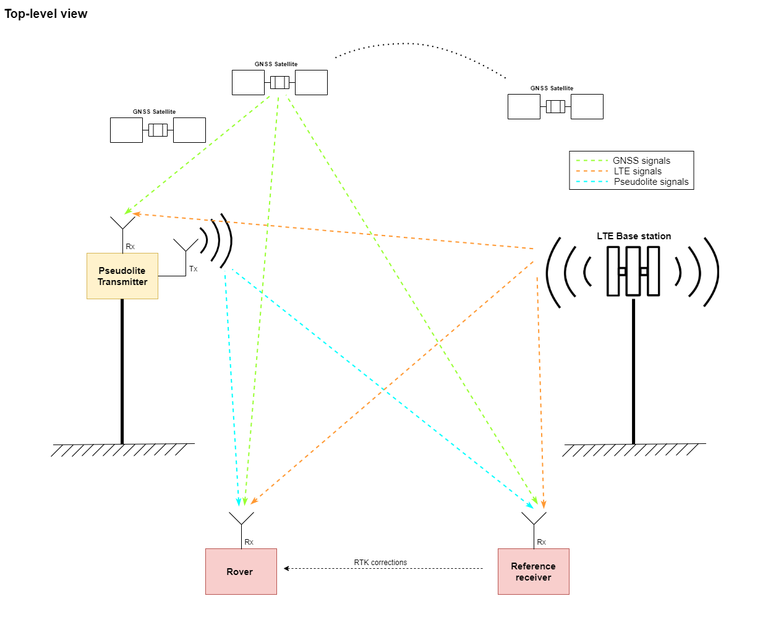Firefly – a mobile networked positioning system for supported navigation in urban environments
Self-localization in autonomous driving requires high-precision navigation. For this purpose, GNSS observation data can be combined with inertial sensor data. Data integrity assessments are also essential for safety-relevant applications. However, the availability of GNSS observation and correction data can be limited in difficult environments such as densely built-up urban areas. This can result in an unacceptable loss of the required precision and even incorrectly assessed integrity, which may endanger lives. The availability of high-precision ranging sources therefore must be increased, especially in urban areas.
For Firefly, this will be achieved by augmenting the navigation system to include “terrestrial” satellites, also known as pseudolites, and orthogonal frequency-division multiplexing (OFDM) ranging, which LTE or 5G transmission towers can provide. New pseudolites and pseudolite signals which will support GPS, Galileo, LTE and, to some extent, 5G signals, will be developed for this purpose. The GNSS, pseudolite and LTE signals will be processed by innovative software-defined radio (SDR) receivers specially optimized for urban environments. The Firefly navigation filter uses the real-time kinematic (RTK) method for all signal classes and ensures the integrity of this solution.
The demonstrator of the Firefly project consists of two pseudolite carrier platforms that improve GNSS and LTE reception via a flying sub-platform – an unmanned aerial vehicle (UAV) relay – if required. The demonstrator also includes an SDR base station and an SDR rover including an RTK navigation filter on board the test vehicle. The demonstrator will be set up on the premises of UniBw M. A simulation environment will be created in order to be able to assess scenarios for a large-scale roll-out of the technology.
Block diagram of Firefly positioning. A rover is capable of precise and robust positioning using the signals of GNSS satellites, terrestrial pseudo satellites (pseudolites) and LTE/5G downlink signals.
Project period: 1. July 2021 through 30 June 2024
Funding by: DLR Space Management
Project partners: RWTH Aachen, WORK Microwave
